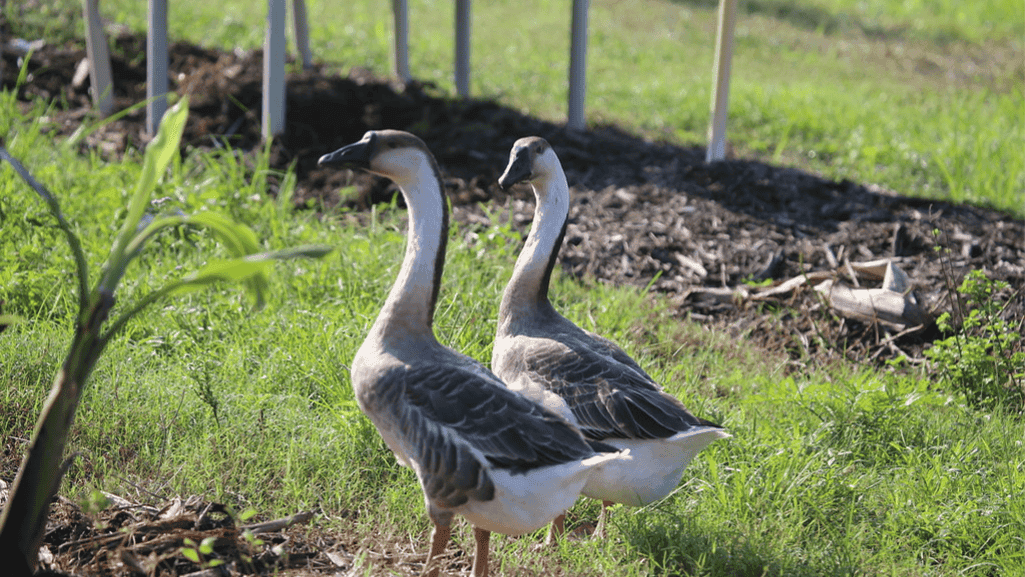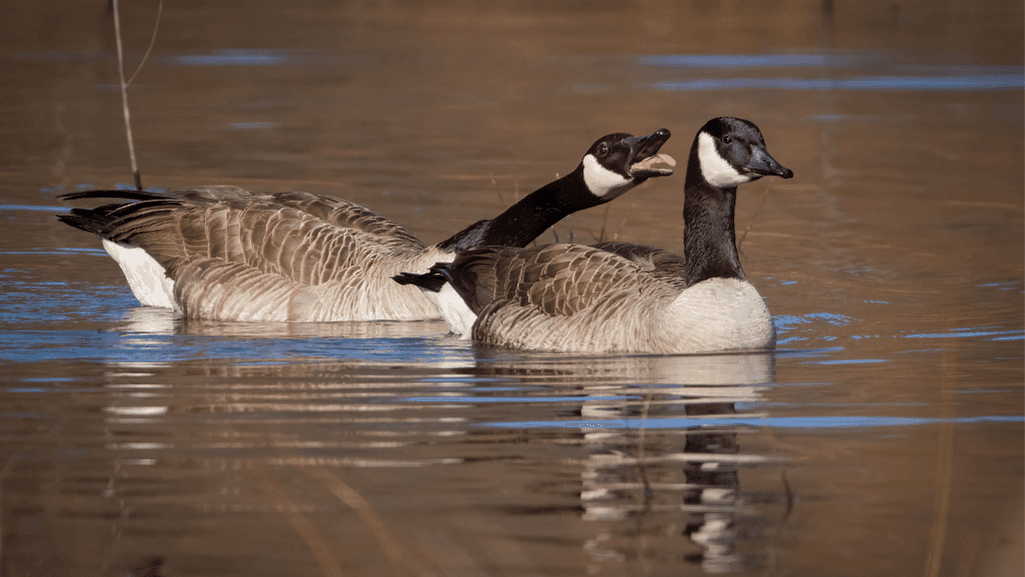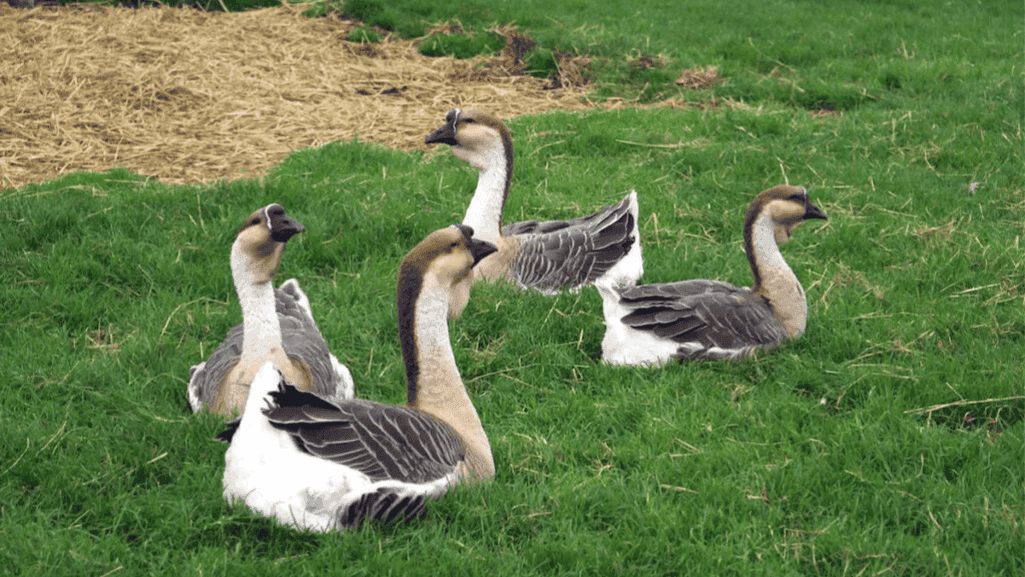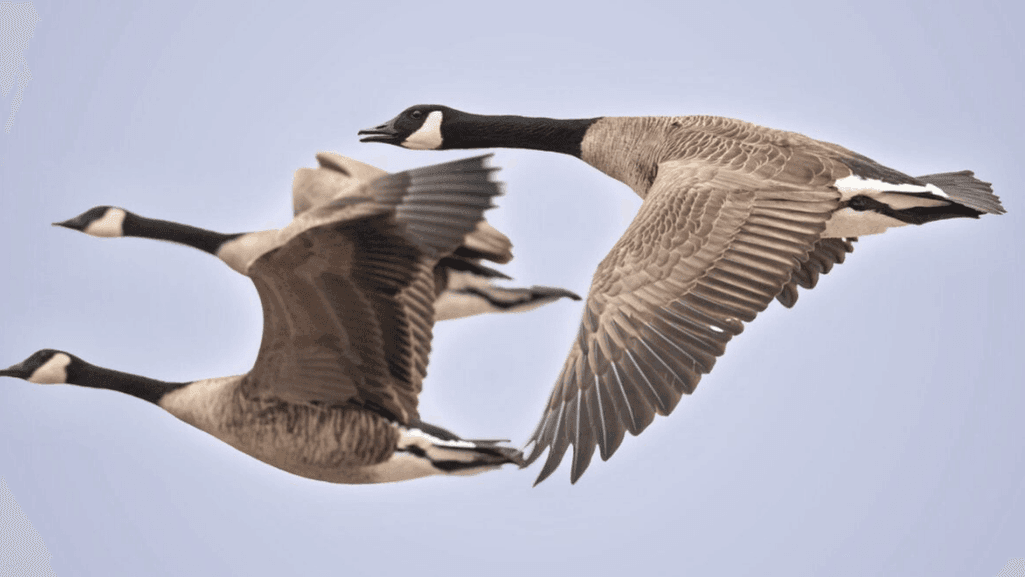African geese are unique birds from sub-Saharan Africa. They are big, loud, and full of energy. They stand tall, with long necks and a special look.
They have a big knob at the base of their beaks. And they are very attentive. This makes them great for farms and gardens all over the world.
African geese live in many places, like wetlands and grasslands. Their ability to adapt and their striking looks make them interesting to bird lovers and farmers. In this guide, we’ll explore their world. We’ll look at their characteristics, where they live, what they eat, how they breed, and their role in farms and conservation.
Key Takeaways
- African geese are large, energetic waterfowl species native to sub-Saharan Africa
- They have distinctive features such as long necks, bulbous knobs on their beaks, and loud honks
- African geese are adaptable to various habitats, from wetlands to grasslands
- They are popular for their use in weeding and guarding due to their attentive personalities
- This guide explores the characteristics, habitat, diet, breeding, domestication, and conservation of African geese
Overview of African Geese
African geese are a unique and captivating breed of avian wildlife. They have been loved by poultry fans for centuries. These birds are not only beautiful but also have special traits that make them stand out.
As migratory birds, they can live in many climates and places. This makes them a great choice for farms or backyards.
General Characteristics
African geese are known for their great meat and eggs. They are also very good parents. These birds can even live in cold places, showing how adaptable they are.
The American Poultry Association recognized the Brown African goose in 1874. The White African goose was recognized in 1987. This shows how long these birds have been loved by poultry keepers.
Physical Appearance
African geese are easy to spot because of their looks. They have two main colors: Brown with black knobs and solid White with orange knobs. They also have a dewlap, a skin bag under their chin.
Mature ganders can weigh up to 22 lbs. Mature geese usually weigh 18 lbs. Young ganders, at 15-18 weeks, can weigh 16-18 lbs.
“African geese are not only visually stunning but also possess a range of remarkable characteristics that make them a popular choice among poultry enthusiasts.”
Behavior and Temperament
African geese are known for their good fertility and parenting skills. These migratory birds are very protective of their young. They form strong family bonds.
As part of the avian wildlife, African geese have natural instincts. These instincts help them thrive in both domestic and wild settings.
Habitat and Distribution
African geese are not from Africa. They come from the wild Swan Goose, found in Asia. Now, they live in places like Europe and the U.S. They’re liked for their size and meat.
African geese live in many places. They like lowland forests and grassy areas. They’ve even been seen at high elevations.
- Mangrove forests
- Clearings and savannas
- Gallery forests
- Thatched roofs
Natural Habitat
Their ancestors, Swan Geese, live in Asia’s wetlands. They like slow-moving water and plants like water lilies. These provide food and shelter.
Range of Distribution
African geese are found worldwide, thanks to farming and ornamental use. They live in Europe, North America, Asia, and Australia.
- Europe
- North America
- Parts of Asia
- Australia
Even though they’re called African geese, they’re not from Africa. But, there are native African geese and ducks. The African pygmy goose is the smallest and roams sub-Saharan Africa and Madagascar.
Diet and Nutrition
African geese, like other waterfowl species, need a specific diet for their health. They are strict vegetarians, always looking for green plants to eat.
In their natural home, African geese spend a lot of time eating young grass. This grass makes up almost all of their diet in warm months. An adult goose can eat up to 2.5 pounds of grass daily, helping to keep lawns neat.
Natural Feeding Habits
African geese mainly eat plants, needing less protein than ducks. Their diet is mostly grass (about 80%) and some grains like oats or corn. They also eat plants in water, pulling roots and rhizomes out of the mud.
In winter, when grass is hard to find, they eat wheat, hay, and cabbage. They also get extra nutrients from foods like peanuts and sunflower seeds.
Recommended Diet for Domestication
For domesticated African geese, a balanced diet is key. Good commercial feeds include:
- Mazuri Waterfowl Maintenance (14% protein)
- Scratch and Peck Feeds Naturally Free Organic Layer (16% protein)
- Purina Duck Feed pellets (19% protein)
- Store brand Game Bird feed (16% protein)
- Whole grain hard wheat (13%), oats (11%), or cracked corn (7.5%)
Domestic geese also need fresh grass to eat, more so from mid-February to April. They do well when they can roam and find their own food like dandelion greens and herbs.
It’s important to have the right number of geese per acre. This prevents them from eating too much grass. No more than two geese per acre is best.
Adding supplements like brewers yeast can help with nutrients. But, it’s important not to overfeed. This can cause health problems like Angel Wing Syndrome. A balanced diet and not too much protein are essential for their health.
Breeding and Reproduction
African geese are amazing birds known for their breeding skills. They are the biggest domestic geese and have special ways of mating and raising their young. Knowing how they breed is key for keeping them as pets and for conservation.
Mating Behavior
African geese pair up when they’re at least one year old. Some males might have more than one female. Males can breed until they’re six, while females can breed up to ten years.
For the best breeding, keep one gander for every three geese. Artificial insemination is common, using one gander’s semen for 12 females. Females can lay fertile eggs every three days for up to ten days after being inseminated.
Nesting and Egg Laying
African geese are great at setting eggs and hatching them. They like to nest in corners or private spots. They lay 12–15 eggs before going broody.
Chinese breeds lay more eggs than Toulouse or Emden breeds. Artificial light can make them lay eggs, like laying hens.
Goose eggs for incubation should weigh 140 g to 200 g. Turning them 180° four times a day helps with hatching. Natural incubation is best, but artificial incubators can get around 40% of eggs to hatch.
Raising Goslings
Goslings are cute and smart birds that need care and attention. They bond strongly with their caretaker. They grow fast and need lots of space.
“Raising goslings is a rewarding experience that requires dedication and understanding of their unique needs.”
Goslings can be sexed at day-old or later. Good nutrition, housing, and health care are vital for their growth into beautiful adult African geese.
Health and Care
Keeping african geese healthy is key to their long life and good work. These birds can live up to 20 years. So, it’s important to feed them well, give them safe homes, and take care of them before problems start.
African geese need to eat short, fresh grass and some extra foods like wheat and layers pellets. They also need grit and sand to help them digest their food, more so when they’re breeding. The best place for them to live is an orchard, as it has shade and good grass for eating.
Common Health Issues
African geese are usually strong, but they can get sick. Some common sicknesses include:
- Avian influenza: Keeping them in a safe area for months helps stop this disease.
- Predator attacks: They need a safe place to live to avoid foxes and stray dogs.
- Gosling health: Goslings need to be able to dip their bills in water to keep their nostrils clean.
Preventative Care
To keep african geese healthy, there are a few things to do:
- Give them a big tub of fresh water for bathing, as they spend more time on land.
- Make sure their home is safe from predators like foxes and badgers, using strong fencing.
- Help them go to bed at night with a familiar command, as they are smart and can get tame.
- Watch their diet and add supplements when needed, more so when they’re breeding.
By focusing on the health and care of african geese, we can help them live long, happy lives and enjoy their special traits for many years.
Domestication of African Geese
African geese, a part of the migratory birds, have been interesting to humans for centuries. They are great companions, help with lawn care, and protect homes. These birds need little training to do these jobs well.
Geese have been domesticated for over 7,000 years, starting in Tianluoshan, China. They are the oldest domesticated poultry. Chinese geese come from swan geese, while European ones come from wild Greylag geese.
Benefits of Raising African Geese
Raising African geese has many advantages:
- Companionship: They bond strongly with humans, creating a special relationship.
- Lawn Maintenance: They are great at keeping lawns neat by eating unwanted plants.
- Guarding: Their keen senses and protective nature make them good guards for farms and homes.
Challenges of Keeping African Geese
Keeping African geese also comes with challenges:
- Predator Threats: Despite their protective nature, they are prey for coyotes and eagles, risking their safety.
- Space Requirements: They need a lot of space to move and forage, which can be hard to provide.
- Social Needs: They are very social and need other geese or animals to be happy, so owners must provide a good home.
“Geese have been a consistent presence in human societies, with depictions in ancient Egyptian and Grecian civilizations, as well as being recorded by ancient Romans for their feathers, meat, and fatty liver.”
Despite the challenges, raising African geese is rewarding for many. Learning about these amazing migratory birds helps us value them more. It also reminds us of the need to protect their natural habitats.
Conservation Status and Efforts
African geese are not yet considered threatened, but they face many challenges. Habitat loss, hunting, and climate change are big threats. It’s important to protect these birds to keep African wetlands diverse.
Threats to Their Population
Habitat destruction is a major threat to African geese. Wetlands, where they live and find food, are being lost. Hunting also harms their numbers. Climate change makes finding food and homes harder.
Conservation Initiatives
Efforts to save African geese include protecting wetlands. The Agreement on the Conservation of African-Eurasian Migratory Waterbirds helps. Creating protected areas and working with local communities are key. Monitoring and controlling hunting are also important.
In places where African geese are not native, careful management is needed. Teaching people about these birds helps support their conservation. Together, we can help African geese thrive in their natural homes.












